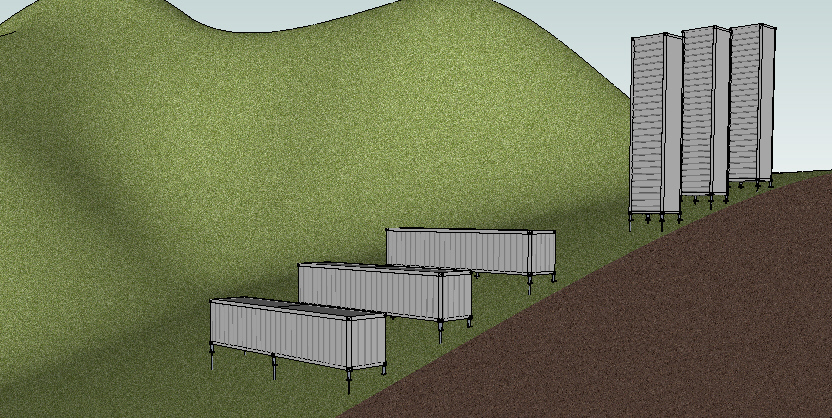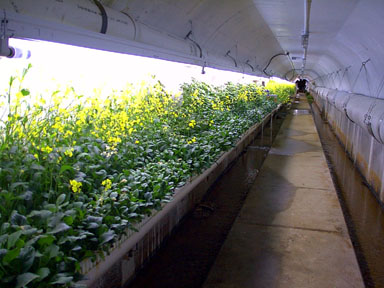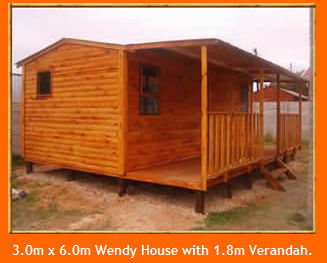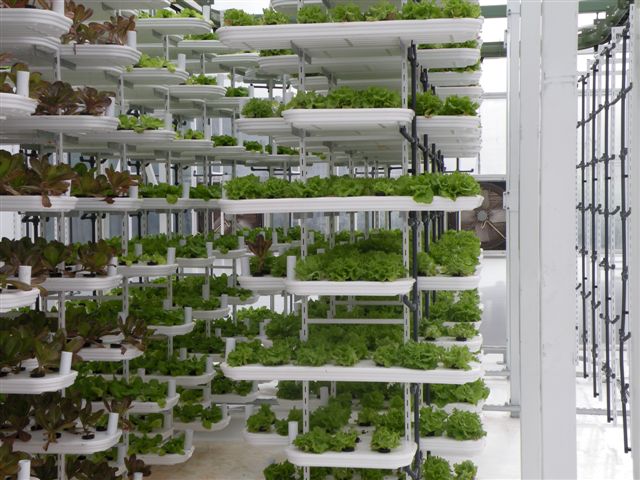Containing famine
-
Not sure if this should be in gallery or corner bar.
This is just an idea stemming from the recent news on the terrible conditions in Somalia and regions around it suffering through the two year drought.
In the past I have played around with creating low cost housing using shipping containers but never was able to get anything that anyone was interested in, I guess the cost is too great for the limited space it achieves.
So I thought why not use shipping containers to help feed people, after all we do have tested and efficient ways to grow contraband, veggies and even grains (rice) using hydroponics.
The system is self containing, mobile, and requires no infrastructure.My concept will use an overkill of solar panels to generate electricity in order to run the Fuzz light high intensity low voltage LED lights or low voltage T5 fluorescent tubes as well as float control water pumps and air-stone bubblers. The balance of the energy will charge an array of batteries for use during the night.
Like the saying goes “Give a man a fish; you have fed him for today. Teach a man to fish; and you have fed him for a lifetime".
I’m not sure if this will even work or of the costs; this is just a concept, just an idea. Hopefully someone knows someone who can look at the idea use it if it has merit, use it to help those in need. I do not need to be involved and will not take any credit if that is a hindrance, I’d even be willing to help develop and offer my limited services without reimbursement to anyone that can make it happen.
It may not be as ambitious as my trans-Atlantic tunnel, but IMO a lot more worthwhile.




-
Great concept, but....
The biggest problem with most famines these days is lack of water and plenitude of war.
That said, you really have a great concept there! I would add bug/varmint netting for the open doors.
-
That's the whole point with this system, the system is closed and water is recycled, evaportation is kept to the minimum so topping up the system is reduced as far as possible.
I have no solution to war however.
Good idea on the netting, this system will also have no need for fertilizers or Monsanto products
 , so essentially they will eat organic foods (better than the crap we get in the city)
, so essentially they will eat organic foods (better than the crap we get in the city) -
that's sweet... did you ever see my idea for temporary housing for natural disasters?
-
@krisidious said:
that's sweet... did you ever see my idea for temporary housing for natural disasters?
Cannot recall, got a link?
-
@bryan k said:
.........The biggest problem with most famines these days is lack of water and plenitude of war..........
Absolutely, especially water. I had a former College Architectural Professor that dedicated the back end of his academic career to alleviating squatter housing. They studied everything from containers, precast shells, tents, cardboard boxes, making brick, etc. In the end nothing worked because the problem that had to be solved first, was political. In some cases, they were not even permitted to give it away.
-
well I saw the container apartments and thought these could be shipped by the thousands to disaster areas and then if there was a way to set them well, they could be used as temporary housing.
my idea was that existing drill bits could be used to place containers in locations that would not normally be conducive to them and thus be used until more permanent housing could be built. using my idea and yours you could place these "green houses" in some less valuable locations. hillsides and such.


anyway I love the idea and the system that you've envisioned. the square footage vs output should be really good.
-
one critique of your system, I think it would be better to have the vents at both ends instead of in the middle... to create a flow through the entire crop. but perhaps you've already planned for that.
-
Great looking model and concept. Have you done the electrical consumption estimates? I dont think solar power would provide enough power to run such a system. All of the containers around here that have things growing in them use diesel gen sets.
Krisidious what kind of floor layout do you envision for the containers standing on there ends in your model?
Cheers
S
-
Solar has made quantum leaps in power output and efficiency these days. Huge leaps.
To me, it's looks like there would be a surplus of power in that design, so it seems to serve a 3 fold purpose: conservation of water, food production and power generation.
Like I said, a great concept!
-
@slimdog said:
Krisidious what kind of floor layout do you envision for the containers standing on there ends in your model?
with exterior being 8'x8' I had guessed that a small bed could be put in a few top levels and leave a small area at the base for a kitchenette... all of this being emergency sized not permanent. and using a ladder to get through the four resulting levels that could be put in a 40' container.
-
if you combine almost any container apartment with Solo's green house you could almost live in any environment self sufficiently if you had a water source.
-
Pete-your system is very similar to a phytoremediation system called rhizofiltration used in landscape remediation (particularly mine reclamation) but more portable. Basically, in areas with contaminated ground water the water is pumped into closed systems where it is the water supply for plants that are "hyper-accumulators" of the toxin(s) in the water. The water is often pumped through multiple rows of plants multiple times like in your system.
Anyways, a little off topic, but your idea reminded me of this.

-
Jon, thanks for that info. Rhizofiltration looks like a great process for filtering water.
Just thinking out loud... why flowers and not something like food that can be given to the poor? is it because of the toxins in the water maybe?
-
i´m not an expert in the field of anything your system has to do with - actually i´m glad my few plants live a happy live in my own four walls, but IMO your concept sounds great and even if it shouldn´t work or help to solve the worlds problems i love to see people thinking about ways to help.
i´ve been thinking about a micro-power-plant design that could make people worldwide independent from external power supply for the longest time. It should be a "non patented open-source blueprint" everybody could build on its own from common materials with a medium effort and produce enough power for the daily needs. no big companies should be able to earn a dollar from it. sweet dreams i know

unfortunately my knowledge in the matter is not sufficient to tackle this on my own and my financial and timely resources are too limited as well...
anyways love your idea and hopefully someone will make something out of it.
-
Kris,
I have pondered this shipping container issue for a long time, years in fact and the more I look at it the more I find issue with it. I guess if they were free and already in dock at a port near the disaster area then fine, they can be used as is, pop a few holes for windows, get some warehouse racking for bungalow style bunk beds to house many and we have a temporary solution. For areas like Somalia and Haiti who's location is so close to the equator I fear they will be big ovens like a dog in a hot car.
Containers can have a use once the disaster is eased as storage facilities, maybe even retail stores in informal market areas, but homes I am not sure.
I have seen over the years how folk have used containers, the stuff on the internet are way over the top, using them as modular Lego blocks defying gravity with Scavalli type kitchens and stainless steel staircases, etc, more of a statement than a solution.
I have been pricing used containers and found that undamaged 20ft containers go for around $2200 undelivered. I have also found a South African company that builds Zozo and Wendy huts for a lesser price (converting ZAR to USD) look at this hut:
[attachment=0:3jcu2six]<!-- ia0 -->Wendy house.jpg<!-- ia0 -->[/attachment:3jcu2six]
It's larger than a 20 ft container and converted it costs $2071 new, and ready for occupation or delivered with instructions in a kit for easy construction.

-
Pete, Im working on a masters of landscape architecture degree with a focus area of landscape restoration/reclamation, so all of my experience with phytoremediation comes from a science standpoint aimed at filtering the toxins. Most of the plants used were selected because they were found to be "hyper-accumulators" meaning they can uptake at least 100x the normal toxic amount of a certain toxin (usually metal).
However, you bring up an interesting point because a lot of research is done into how and why these hyper-accumulators are able to absorb so much toxin and still survive. Off of that research, of course, could come the possibility of making weaker plants into hyper-accumulators. The one potential problem I see with it is what I think you were asking at the end of your post-where the plant stores the toxin(s). Some plants store it in their roots, some in the stalks, some in leaves, etc. If it was a crop plant, it would obviously have to store it somewhere out of the crop parts. But in theory, if research could identify why certain plants store the toxins in certain areas, the possibility of breeding that into other plants is there.
I am having trouble remembering specific examples, but I seem to recall that in certain cases the plants have been harvested and the metal has actually been extracted for commercial uses.
Very interesting conversation though-thanks!
-
This is coincidental Pete!
I have been checking out 'The $300 House' Challenge
http://forums.sketchucation.com/viewtopic.php?f=179&t=38969Some VERY low cost ideas in many entries!
Mike
-
Solo
Check out this website:
Consider adding a way to rotate the crops so that each "plant" gets access to natural light.
Consider "linking" the containers together to share water pumps etc. but multiply the plants.

-
Great link Phil, food for though (pun intended) Looks like a very expensive bit of rig however, I was hoping to get by with PVC pipe, round bar, production aquarium bubblers, and shop light fittings and able to construct on site.
Advertisement







